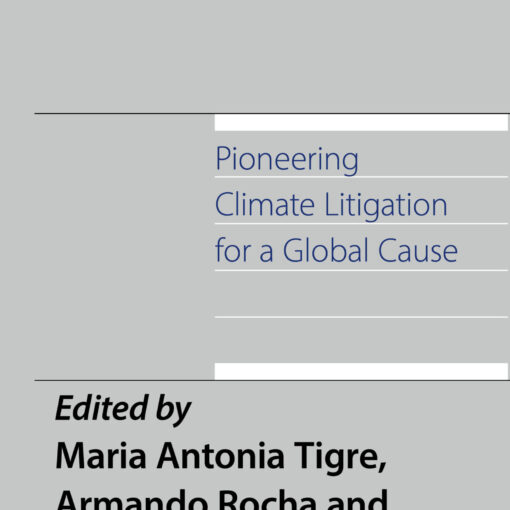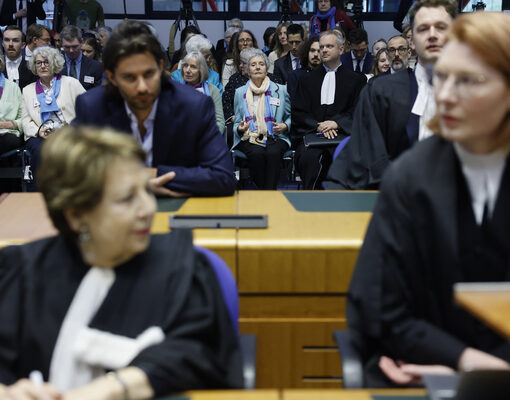The three much-awaited judgments issued by the European Court of Human Rights (ECtHR) on April 9, 2024 are truly historic and unprecedented. In Verein Klimaseniorinnen Schweiz and Others v. Switzerland, the Grand Chamber established that climate change is “one of the most pressing issues of our times” and poses a threat to human rights. With this ruling, the Court confirmed that States have a positive obligation to adopt measures to mitigate climate change under Article 8 of the ECHR, the right to family and private life. According to the Court, Switzerland failed to comply with this obligation and exceeded its margin of appreciation by not meeting its past greenhouse gas (GHG) emissions reduction targets and allowing for “critical lacunae” in its regulatory framework. The Court also found a violation of Article 6 ECHR, the right of access to court. The Court declared the two other cases, Carême v. France and Duarte Agostinho and Others v. Portugal and 32 others, inadmissible on procedural grounds (no victimhood and a failure to exhaust domestic remedies). This blog post provides a quick overview of the three rulings, most notably Klimaseniorinnen, and sketches out their most important implications. It obviously does not do justice to the richness of the judgments. It is primarily written with the idea that scholars and experts will delve into all the intricacies in this blog symposium (see introduction here) and other publications in the years to come (see already Milanovic here and Buyse and Istrefi here).
Klimaseniorinnen: Major Substantive Take-Aways
With Klimaseniorinnen, the Court follows in the footsteps of various national courts, most notably the Dutch Urgenda ruling (see also the extensive overview of the domestic case-law in paras. 236-272 of the judgement), as well as international courts and bodies (e.g., the Inter-American Court of Human Rights and the UN Committee on the Rights of the Child). The Court can be commended for the relatively swift handling of these cases under its priority policy, involving 37 third-party interventions (including a brief by the Sabin Center) and 33 respondent States. The judgment in Klimaseniorinnen is 657 paragraphs long, and the inadmissibility decision in Duarte is not brief either at 231 paragraphs.
In their case against Switzerland, the four Swiss elderly women and the association relied on Articles 2 and 8 of the ECHR and argued that the increase in heatwaves poses a health risk to them, considering their age. They also alleged breaches of Article 6 (the right to access to court) and Article 13 of the ECHR (the right to an effective remedy) for the authorities’ failure to respond seriously to their requests and provide an effective remedy with respect to the alleged violations of Articles 2 and 8 of the ECHR.
Before delving into the procedural aspects, we will first examine various important elements related to the merits. Notably, the Court responded to (and preempted) criticism as to the undemocratic role of courts in relation to climate change (paras. 410-414 and 449-451). The UK government, for example, noted critically that the applicants are “asking the Court to act as legislator.” The Court emphasizes that judicial intervention cannot replace legislative or administrative action but that “democracy cannot be reduced to the will of the majority … in disregard of the requirements of the rule of law” (para. 412).
With respect to Article 8, the Court forcefully held that this provision encompasses the right of individuals to effective protection from serious adverse effects of climate change on their life, health, well-being and quality of life (para. 519). Particularly noteworthy is the distinction in relation to the scope of the margin of appreciation. The Court adopted a reduced margin in relation to the necessity of combating climate change, while it accorded states a wide margin as to the choice of means (para. 543). The court made clear that, in order to guarantee Article 8, States have a positive obligation to adopt, and effectively apply regulations and measures capable of mitigating the existing and potentially irreversible effects of climate change (para. 545). The Court even determined that Article 8 requires states to “undertake measures for the substantial and progressive reduction of their respective GHG emission levels, with a view to reaching net neutrality within, in principle, the next three decades” (para. 548). These principled pronouncements are groundbreaking, as also illustrated by the partly (and only) dissenting opinion of the British Judge Tim Eicke. According to Eicke, this newly created right to effective protection by the State does not have any basis in Article 8 or any other provision (para. 4). The majority of the Court disagreed.
While the Court did not find a violation of Article 2, it acknowledged that the principles developed under the right to life are “to a very large extent” similar to those under Article 8 (para. 537). Regarding Article 6, the Court gave the domestic Swiss courts a rap over the knuckles for not addressing the issue of standing of the association. The failure of the domestic courts to engage “seriously or at all” in the action brought by the applicant association, and the absence of other legal avenues, impaired the very essence of the association’s right of access to a court (paras. 636-638).
Victimhood: Welcoming Associations While Turning Down Individual Applicants
The most important procedural takeaway from Klimaseniorinnen relates to Article 34 of the ECHR. The Court allow associations to take legal action in relation to climate change. This confirms the hints that were already made by President O’Leary during the hearing in relation to the Aarhus Convention (paras. 490-501). Most importantly, the Court determined that an association does not need to show that its members or other affected individuals on whose behalf it is acting would themselves have met the victim-status requirements (para. 502). The judgment also builds on the Court’s previous case law in Mellox and Câmpeanu and the recognition of the (theoretical) possibility of environmental associations bringing climate cases in most member states (para. 234). In order to avoid “abstract complaint[s] about a general deterioration,” the Court presented three criteria mostly related to the legal position and representativeness of the association (para 501). To appreciate the implications of these considerations, it is useful to read the partly dissenting opinion of Judge Eicke. He criticizes the Court for its all-too evolutive interpretation of the victim requirement that essentially opens the door to actio popularis-type complaints.
While the Court adopted a welcoming attitude towards associations, it is more discouraging towards individual applicants. The Court declareed that the four elderly Swiss women lack victimhood and are not directly affected. In doing so, the Court upheld the high threshold of a minimum level of severity in its earlier case law (para. 472). The Court pointed out that applying a low threshold could lead to claims being brought by a huge number of persons because everyone is or will be affected by the adverse effects of climate change. Considering the exclusion of actio popularis, the Court lays down two strict criteria: (i) a high intensity of exposure to the adverse effects of climate change with significantly severe adverse consequences of governmental (in)action as well as (ii) a pressing need owing to the absence or inadequacy of reasonable measures to reduce harm. In the court’s view, the four applicants failed to satisfy these requirements as they were not in any “critical medical condition” and there was no proof of a correlation with the asthma of one of the women (para. 533). The Court also reiterated its well-established case law that future risks can “only in highly exceptional circumstances” be taken into account (para. 470). The implication of Klimaseniorinnen is that NGOs and associations may have an easier time in accessing the Court in climate cases than “lone wolves”. This approach should help to limit the potentially high number of complaints that would otherwise be lodged with the Court in Strasbourg.
Carême exemplifies a straightforward and unsurprising application of the victim requirements under Article 34 of the ECHR. Carême claimed that the government of France violated its positive obligations under Articles 2 and 8 by not taking all appropriate GHG emission reduction measures to reach the goals France has set for itself under the Paris Agreement. The Court concluded that the former mayor of Grande-Synthe lacked victimhood since he no longer lives in France. He has no relevant links with the municipality Grande-Synthe aside from the fact that his brother is living there. Furthermore, Carême has no right to lodge a complaint on behalf of the municipality of which he was the former mayor.
Duarte Agostinho: No Extraterritoriality
The Court declared the most mediagenic, high-profile, and ambitious case of Duarte Agostinho inadmissible. The six Portuguese youngsters in the case did not only bring a claim against their home State, but also against 32 other States for violating Articles 2, 3, 8, and 14 of the ECHR. The applicants had not exhausted domestic remedies in any of the respondent States.
The case raised the contentious issue of extraterritoriality. The Court followed the defending States and relied on a strict territorial test requiring effective control over the emissions. While acknowledging the peculiarity of climate change, the Court was wary of creating a “novel ground” for extraterritorial jurisdiction “by way of judicial interpretation” (para. 195). In the court’s view, this would result in “a radical departure from the rationale of the Convention protection system, which was primarily and fundamentally based on the principles of territorial jurisdiction and subsidiarity” (para. 205). The Court also pointed to “an untenable level of uncertainty for the States” when the extraterritorial jurisdiction is expanded, turning the ECHR into a global climate change treaty that can be activated by people anywhere in the world (para. 208). The Court’s approach notably differs from the UN CRC Committee and IACtHR which required merely that the harm was ‘reasonably foreseeable’ to the State Party (as analyzed here, here and here). The Court explicitly acknowledges this difference (para. 212).
The Court concluded that the Portuguese youngsters failed to exhaust domestic remedies in the only state that has jurisdiction–Portugal. According to the court, the youngsters should have started a case before the Portuguese courts. This follows from the subsidiary nature of the ECHR system, and the Court made clear that it also benefits from a prior review by national courts (para. 228). The various Urgenda-type national court cases in recent years also illustrate that this requirement is not unreasonable, considering the risk of opening the “floodgates.” The Court’s inadmissibility decision is thus not surprising and aligns with the decision of the UN CRC Committee in Sacchi et al v. Argentina et al.
Despite the case’s inadmissibility, the Court acknowledged several points made by the applicants. For example, it recognized that States have ultimate control over private and public activities on their territories that produce GHG emissions and those emissions do impact people beyond a State’s border (para. 192).
The Impetus to Climate Litigation
The judgments will undeniably set the tone for climate litigation in the years to come. They will impact both litigation and other procedures before other international (i.e., the advisory opinions before the International Court of Justice, International Tribunal for the Law of the Sea and IACtHR) and national courts. Formally speaking, judgments of the Court are only binding between the parties (inter partes). The judgments are, nonetheless, considered to contain res interpretata. This means that an interpretation by the court is part of the ECHR and is generalizable beyond the individual case at issue.
The judgments are certainly not last word on climate change from the Court in Strasbourg. Six other climate cases are still pending before the Court. The judgments will also leave their mark more broadly in the environmental area and provide a much-needed impetus considering the limitations that dominate this area. As Lambert noted in 2020: the Court “reached the end of the road with regard to environmental protection.” The Court’s approach can also be contrasted with the absence of a ‘rights turn’ in the case law of the Court of Justice of the EU, primarily resulting from restrictive standing requirements (in Carvalho). The reliance on Aarhus by the Court could be a valuable source of inspiration for the CJEU’s locus standi requirements in relation to the action for annulment (263(4) TFEU), also considering Article 52(3) of the Charter and the EU’s ratification of the Aarhus Convention.
The question remains what the judgments imply for the ongoing discussions with respect to the recognition of the right to a clean, healthy and sustainable environment as a separate self-standing human right (e.g., the UNGA Resolution adopted in July 2022), or even a distinct right against the adverse effects of climate change (e.g. the Indian Supreme Court in March 2024). Following a resolution of the Committee of Ministers, the CDDH-ENV held its last meeting about the environment and human rights in March 2024 and sent its draft report to the CDDH for its adoption in June 2024. In Klimaseniorinnen, the Court acknowledged these developments by noted that it is not for the Court to determine whether such a right exists. Its role is to assess the Convention issues before it (para. 448). The Court’s decision highlights that the ECHR is a living instrument that enables the Court to engage with urgent issues.







